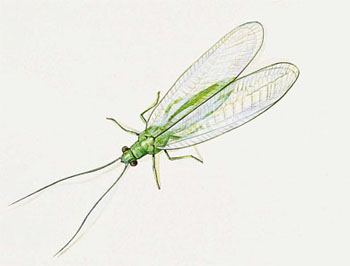Browse "Things"
-
Article
Lac La Croix Indigenous Pony
The Lac La Croix Indigenous pony, also known as the Lac La Croix Indian pony or the Ojibwa pony, is thought to be the only existing breed of horse developed by Indigenous people in Canada. It takes its name from Lac La Croix First Nation in northwestern Ontario, where it was last found in the wild. Known in the Ojibwa language as bebezhigooganzhii or mishdatim (meaning “one big toenail”), it is a small, semi-feral horse that once lived in the wild and worked as a service animal — but is also considered a spirit animal — for the Ojibwa people of northwestern Ontario and northern Minnesota. Today, this friendly, all-purpose breed is used in equine therapy, Indigenous heritage programs and tourism. Conservation efforts in Canada and the United States strive to protect the breed, which is critically endangered.
"https://d2ttikhf7xbzbs.cloudfront.net/media/media/1ef4a37a-9a7a-430d-bb76-270783327204.jpg" // resources/views/front/categories/view.blade.php
https://d2ttikhf7xbzbs.cloudfront.net/media/media/1ef4a37a-9a7a-430d-bb76-270783327204.jpg
-
Article
Lac-Mégantic Rail Disaster
In the early morning of 6 July 2013, a runaway train hauling 72 tankers filled with crude oil derailed as it approached the centre of the town of Lac-Mégantic, Quebec. The tanker cars exploded and the oil caught fire, killing 47 people and destroying many buildings and other infrastructure in the town centre. The fourth deadliest railway disaster in Canadian history, the derailment led to changes in rail transport safety rules as well as legal action against the company and employees involved in the incident. Years after the derailment, re-building was still ongoing and many of the town’s residents continued to suffer from post-traumatic stress.
"https://d2ttikhf7xbzbs.cloudfront.net/media/new_article_images/Lac-Mégantic_Rail_Disaster/First responders.jpg" // resources/views/front/categories/view.blade.php
https://d2ttikhf7xbzbs.cloudfront.net/media/new_article_images/Lac-Mégantic_Rail_Disaster/First responders.jpg
-
Article
Lacewing
Lacewing is the common name for small, fragile insects of the 2 most common families (Chrysopidae, green lacewings; Hemerobiidae, brown lacewings) of order Neuroptera.
"https://d2ttikhf7xbzbs.cloudfront.net/media/media/e8007af8-8d70-4067-8d62-17a758d4bdc9.jpg" // resources/views/front/categories/view.blade.php
https://d2ttikhf7xbzbs.cloudfront.net/media/media/e8007af8-8d70-4067-8d62-17a758d4bdc9.jpg
-
Article
Lachine Raid
French westward expansion in the 1670s and 1680s cut off the Haudenosaunee (Iroquois) Confederacy from new sources of beaver and threatened New York's fur trade.
"https://development.thecanadianencyclopedia.ca/images/tce_placeholder.jpg?v=e9dca980c9bdb3aa11e832e7ea94f5d9" // resources/views/front/categories/view.blade.php
https://development.thecanadianencyclopedia.ca/images/tce_placeholder.jpg?v=e9dca980c9bdb3aa11e832e7ea94f5d9
-
Article
Lacrosse
Lacrosse is one of the oldest organized sports in North America. While at one point it was a field game or ritual played by First Nations, it became popular among non-Indigenous peoples in the mid-1800s. When the National Lacrosse Association of Canada was formed in 1867, it was the Dominion of Canada’s first governing body of sport. Lacrosse was confirmed as Canada’s official summer sport in 1994. The Canadian national lacrosse teams (men and women) rank highly in the world standings, both in field and box lacrosse.
"https://d2ttikhf7xbzbs.cloudfront.net/media/media/0385ec20-f89a-4555-a7c1-78c41bbdc220.jpg" // resources/views/front/categories/view.blade.php
https://d2ttikhf7xbzbs.cloudfront.net/media/media/0385ec20-f89a-4555-a7c1-78c41bbdc220.jpg
-
Article
Lacrosse: From Creator’s Game to Modern Sport
Lacrosse, the Creator’s Game, is known to various First Nations in North America by many different names, including baggataway (Algonquian), kabocha-toli (Choctaw) and tewaarathon (Mohawk).
"https://d2ttikhf7xbzbs.cloudfront.net/media/media/84b0321c-885e-4185-bb02-953cd0a2b81b.jpg" // resources/views/front/categories/view.blade.php
https://d2ttikhf7xbzbs.cloudfront.net/media/media/84b0321c-885e-4185-bb02-953cd0a2b81b.jpg
-
Article
Lacrosse Stick
Traditional lacrosse sticks are made of a single piece of wood, bent to form the head of the stick (the part used for catching, carrying, and throwing the ball). Traditionally, Indigenous stick makers wrapped pliable steamed hickory around a tree in order to bend it.
"https://d2ttikhf7xbzbs.cloudfront.net/media/media/0385ec20-f89a-4555-a7c1-78c41bbdc220.jpg" // resources/views/front/categories/view.blade.php
https://d2ttikhf7xbzbs.cloudfront.net/media/media/0385ec20-f89a-4555-a7c1-78c41bbdc220.jpg
-
Article
Ladies Ontario Hockey Association (LOHA)
The Ladies Ontario Hockey Association (LOHA) was the first governing body for community women’s ice hockey in Canada. It was formed in 1922 and disbanded in 1940. Initially, the league consisted of 18 senior teams from across Ontario, from bigger cities such as Toronto, London and Ottawa, to smaller centres such as Bowmanville, Huntsville and Owen Sound. The creation of the LOHA led to the 1925 founding of the Women’s Amateur Athletic Federation, which absorbed the LOHA when it disbanded.
"https://d2ttikhf7xbzbs.cloudfront.net/media/new_article_images/LadiesOntarioHockeyAssociation/Preston_Rivulettes_team_photo.jpg" // resources/views/front/categories/view.blade.php
https://d2ttikhf7xbzbs.cloudfront.net/media/new_article_images/LadiesOntarioHockeyAssociation/Preston_Rivulettes_team_photo.jpg
-
Article
Lady Byng Memorial Trophy
The Lady Byng Memorial Trophy is awarded annually to the National Hockey League (NHL) player “adjudged to have exhibited the best type of sportsmanship and gentlemanly conduct combined with a high standard of playing ability.” The trophy was donated to the NHL in 1925 by Lady Evelyn Byng, wife of Governor General Byng. It was known as the Lady Byng Trophy until her death in 1949, when it was renamed the Lady Byng Memorial Trophy. The winner is chosen through a poll of the Professional Hockey Writers’ Association at the end of the regular season and is awarded after the Stanley Cup playoffs. Notable winners include Frank Boucher, Wayne Gretzky, Red Kelly, Pavel Datsyuk, Mike Bossy, Ron Francis and Martin St. Louis.
"https://d2ttikhf7xbzbs.cloudfront.net/media/new_article_images/Lady_Byng,_née_Marie_Evelyn_Moreton,_by_Philip_Alexius_de_László.jpg" // resources/views/front/categories/view.blade.php
https://d2ttikhf7xbzbs.cloudfront.net/media/new_article_images/Lady_Byng,_née_Marie_Evelyn_Moreton,_by_Philip_Alexius_de_László.jpg
-
Article
Lady's Slipper
Lady's Slipper, common name for some members of the orchid family in which modified petals (labella) fold inward to make the toe of the "slipper."
"https://development.thecanadianencyclopedia.ca/images/tce_placeholder.jpg?v=e9dca980c9bdb3aa11e832e7ea94f5d9" // resources/views/front/categories/view.blade.php
https://development.thecanadianencyclopedia.ca/images/tce_placeholder.jpg?v=e9dca980c9bdb3aa11e832e7ea94f5d9
-
Article
Laforce & Bourdeau Laurent
Laurent, Laforce & Bourdeau (Laurent et Laforce, 1861-4; Laurent, Laforce & Cie, 1865-88). Montreal music and instrument dealers, publishers, and piano manufacturers.
"https://development.thecanadianencyclopedia.ca/images/tce_placeholder.jpg?v=e9dca980c9bdb3aa11e832e7ea94f5d9" // resources/views/front/categories/view.blade.php
https://development.thecanadianencyclopedia.ca/images/tce_placeholder.jpg?v=e9dca980c9bdb3aa11e832e7ea94f5d9
-
Article
Lagomorpha
Lagomorpha, order of mammals containing 2 families: the rabbits and hares (Leporidae), and the small, lesser-known pikas (Ochotonidae).
"https://d2ttikhf7xbzbs.cloudfront.net/media/media/8e71f9da-22dd-4449-bd01-06be2e3f6ddf.jpg" // resources/views/front/categories/view.blade.php
https://d2ttikhf7xbzbs.cloudfront.net/media/media/8e71f9da-22dd-4449-bd01-06be2e3f6ddf.jpg
-
Article
Lake Agassiz
Lake Agassiz was the largest glacial lake in North America. It was formed 11 500 years ago in front of the northeastwardly retreating Laurentide Ice Sheet, which acted as a dam.
"https://development.thecanadianencyclopedia.ca/images/tce_placeholder.jpg?v=e9dca980c9bdb3aa11e832e7ea94f5d9" // resources/views/front/categories/view.blade.php
https://development.thecanadianencyclopedia.ca/images/tce_placeholder.jpg?v=e9dca980c9bdb3aa11e832e7ea94f5d9
-
Article
Lakehead University
Lakehead University, Thunder Bay, Ont, was founded in 1965. Its roots date back to 1946 when Lakehead Technical Institute was established. The name was changed to Lakehead College of Arts, Science and Technology in 1956, and in 1957 the city of Port Arthur donated the land for a new college campus.
"https://development.thecanadianencyclopedia.ca/images/tce_placeholder.jpg?v=e9dca980c9bdb3aa11e832e7ea94f5d9" // resources/views/front/categories/view.blade.php
https://development.thecanadianencyclopedia.ca/images/tce_placeholder.jpg?v=e9dca980c9bdb3aa11e832e7ea94f5d9
-
Article
Lakes in Canadian Music
With the exception of the Great Lakes which border Ontario on the south, Canada's lakes no longer play a significant role in the country's development; rather they serve recreation and tourism, provide hydro-power, and are valued for their natural beauty.
"https://development.thecanadianencyclopedia.ca/images/tce_placeholder.jpg?v=e9dca980c9bdb3aa11e832e7ea94f5d9" // resources/views/front/categories/view.blade.php
https://development.thecanadianencyclopedia.ca/images/tce_placeholder.jpg?v=e9dca980c9bdb3aa11e832e7ea94f5d9
